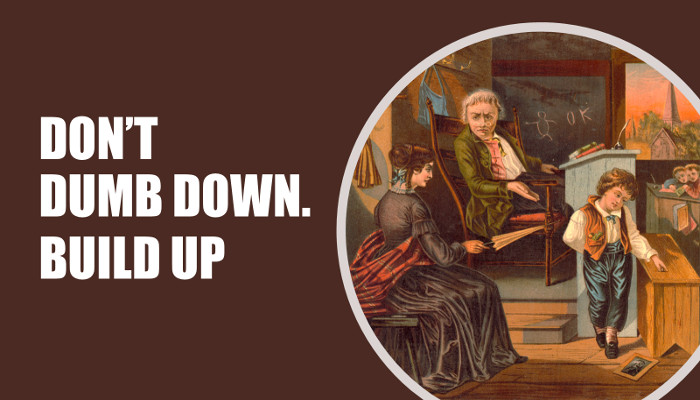
The question “What do you want on your headstone?” is an excercise with deep storytelling roots because it forces you to find your life’s throughline (StoryHow™ Pitchdeck Card # 40). I found my answer to the question many years ago.
He made the complex simple.
That’s what I do. I love to transform complex concepts into fundamental elements of human understanding.
Richard Feynman, the late Nobel Prize winning physicist, had an interesting way of testing his understanding of a complex concept by preparing a freshman lecture on it. If he couldn’t explain the concept to a classroom filled with high-school educated students, he concluded that he didn’t understand it himself, and therefore needed to go back to the drawing board.
I love that philosophy because professor Feynman puts the blame on himself, not the students. He, like all great storytellers, has empathy for his audience and thus takes responsibility for helping his students build upon their prior knowledge to arrive at the new knowledge.
His philosophy runs counter to a phrase that I despise. If you ever want to see me get a little heated, just say the following: “Ron, we need to dumb this down.” I hate this phrase because it belittles an audience. Audiences don’t need oversimplifications, they need someone who cares enough to teach them what they need to learn. Unfortunately, such teaching requires effort. But if done right, the effort is worth it.
Recently, I helped an engineer explain his new machine learning program. As with most brilliant people describing their work, he dove enthusiastically into too many details of how his invention worked instead of what it did. So, I asked him questions. Why was his program important? What problem did it solve? What are the implications of not having it? It took a while, but I began to understand who the program was for and why it was important to them. Finally, by embracing my own learning process, I found the path to help others understand it too. I didn’t dumb-down the concept–I bootstrapped my understanding to his, and then taught others how to do the same.
Dumbing-down is easy. Building up is hard. The human mind can comprehend complex concepts immediately if given the right context and frame of reference. It’s our job as storytellers to find that baseline concept and to build upon it.
Don’t dumb down. Build up.
Photo Credit: Thomas, Henry Atwell, Copyright Claimant. “The good-for-nothing” / W. Una chro. ; Raynor pin. , 1872. [New York City: Published by the American Chromo Co. No. 743 Broadway, New York City] Photograph. https://www.loc.gov/item/2017660748/